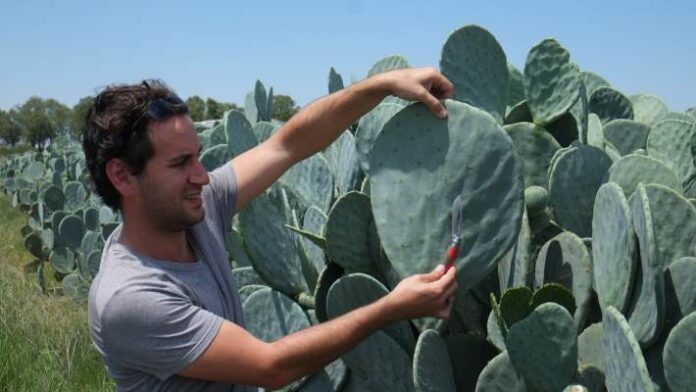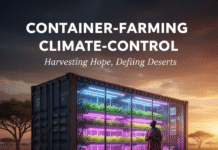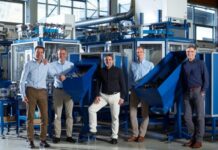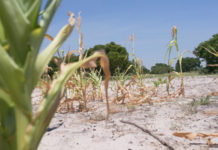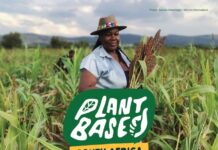The spineless cactus is a unique perennial plant that is able to yield close to 40 tons of dry matter per hectare per year with a rainfall of 500 mm per annum. “This equates eight tons of biomethane or 11 000 litres of diesel-equivalent energy per hectare,” says Axel Tarrisse, a PhD student in the Department of Sustainable Food Systems and Development at the University of the Free State (UFS), who is working on the biogas and fodder potential of spineless cactus in Africa.
Tarrisse believes biogas, produced from the spineless cactus, has the potential to complement the supply of South Africa’s existing industrial energy companies to produce sustainable jet fuel and diesel and a variety of other products with the gas-to-liquid process they use.
Developing biogas
He says with rainfall, key nutrients, carbon dioxide, and solar energy it is possible to produce biomass from cactus.
“First, we harvest the cactus and macerate it prior to going into an anaerobic digester where it is heated to 38°C, the same as a cow’s body temperature. Inside the digester, naturally occurring bacteria, similar to those found in their stomachs, break down the cactus, resulting in the production of biogas. This biogas is composed of both methane and carbon dioxide,” he explains.
According to him, biogas generated through this process can be used in a number of ways. This includes running generators to produce electricity or burning it to generate heat. It will also serve as a feedstock to replace coal and natural gas used by companies such as PetroSA and Sasol in their production of synthetic renewable fuels.
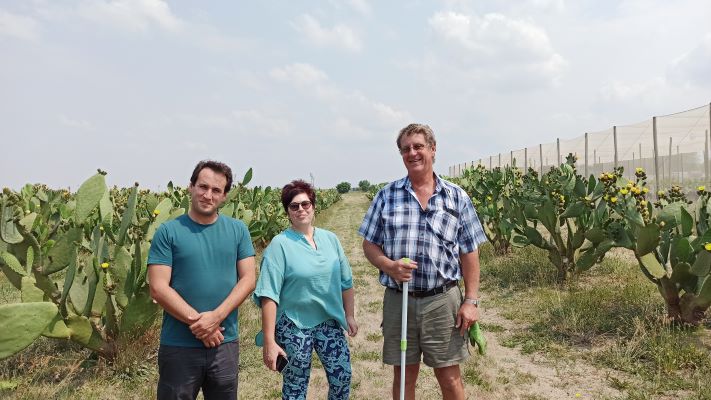
“The methane can also be separated from the carbon dioxide and compressed into bottles, creating compressed biomethane. This can be used as a replacement for liquid petroleum gas (LPG), as well as petrol and diesel in vehicles, such as bakkies, tractors, buses, and delivery trucks.”
The carbon dioxide produced in the process can, for example, be used to replace the fossil-based carbon dioxide typically used in the production of carbonated beverages. Additionally, it can be applied to extend the shelf life of packaged foods, serve as a water softener, and even be applied to a variety of industrial applications.
Commercialisation
Biogas/biomethane is already produced in Mexico on a commercial scale. In Northeast Brazil, farmers have planted 600 000 hectares of spineless cactus, also known as Palma Forrageira, but the machinery needed to harvest it only became commercially available this year.
Back home in South Africa, just 30 km outside of Bloemfontein, Barren Energy farm is at Stage 1 with 140 hectares of high-density cactus planted to provide the initial feedstock for anaerobic digestion. With 600 hectares, they will be able to produce five million litres of diesel-equivalent methane.
Tarrisse says, “With the right methodology and management system, producing biogas from the spineless cactus will be adopted relatively quickly on a commercial scale.”
He believes that the lack of investment in cultivating the spineless cactus as a crop for fodder in South Africa may be due to a few factors. “It is easier to stick to what is known, such as irrigating lucerne and maize and managing these crops with existing planters, pest management solutions, and harvesting machinery than to develop local machinery and management solutions for a perfectly adapted crop,” he says.
Compelling reasons
According to Tarrisse, there are several compelling reasons to consider the spineless cactus as a source of biogas in South Africa.
Firstly, he explains, “Only the cactus pads, harvested from high-density plantations (20 000 plants per hectares), are used for biogas production.”
“Secondly, the spineless cactus can yield large volumes of biomass from marginal semi-arid land where conditions are unsuitable for conventional crop cultivation. This makes it an ideal option for the 65% of South African land that receives less than 500 mm of rainfall annually.”
Thirdly, he says, “The plant contains 30 to 50% of easily digestible sugars, which degrades easily in an anaerobic digester. This simple, low-tech process can provide a substantial amount of baseload energy with relatively limited capital expenditure, which is particularly important in developing countries such as South Africa where capital is difficult to raise.”
“On top of that, anaerobic digestion only extracts carbon, oxygen, and hydrogen molecules from the cactus, while most of the macro- and micronutrients, water, and some fibres remain in the digestate. This nutrient-rich cactus digestate can then be spread on the cactus fields, reducing the need for fertiliser once the plantation has been fertilised in the first two years of implementation.”
Societal impact
Besides the benefits of producing biogas from the cactus plant, there is also the opportunity of job creation. “This farming can create one million direct job opportunities from only 3% of South Africa’s land area, approximately 4 million hectares,” says Tarrisse.
He is of the opinion that if production was at scale, as opposed to the current small orchard-style farming of cactus, there would be substantial biomass available to sustain not only biomethane, but also to support various bio-industries, such as protein production through cactus fermentation, biomaterials as a substitute for wood-based cellulose, organic acids, and bioplastics. “Consequently, cactus provides a climate-resilient, drought-resistant, and perennial feedstock for food, feed, fibre, and fuel in semi-arid Southern Africa,” he says.
Tarrisse states that this initiative also has the potential to significantly reduce migration from rural to urban areas, therefore addressing issues related to the growth of urbanisation, such as the provision of infrastructure and crime.


